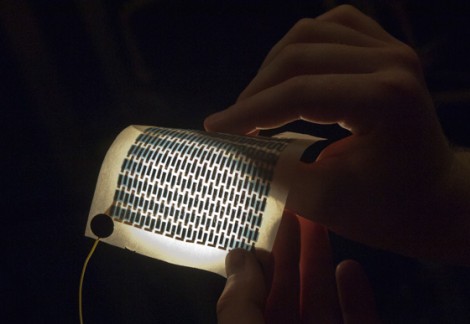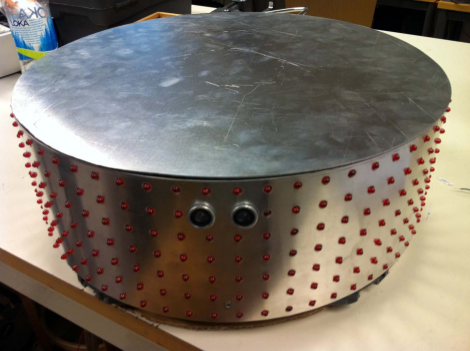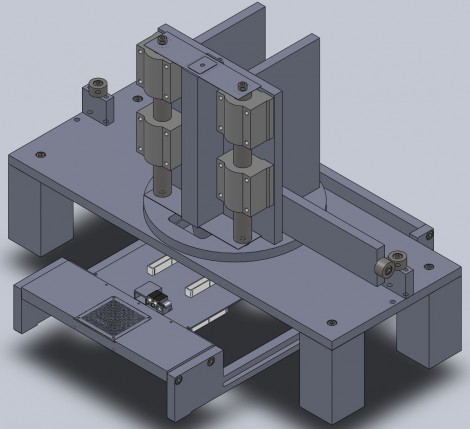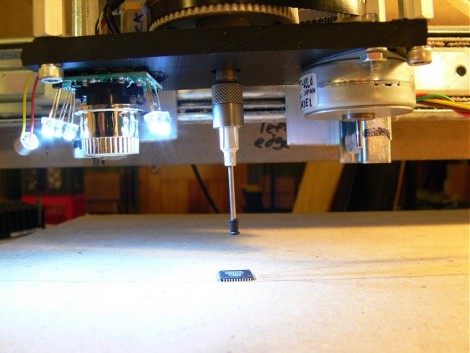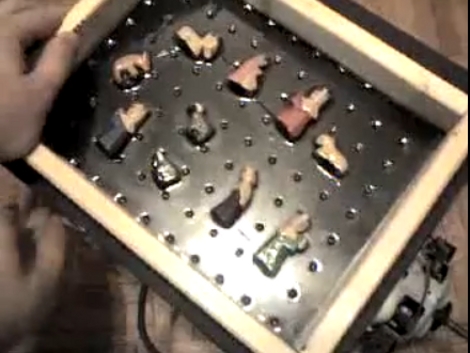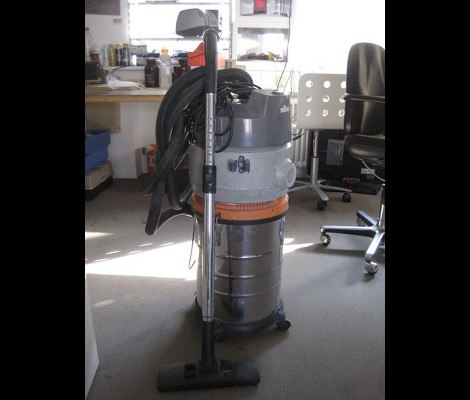
Unfortunately the result of hacking together two shop vacuums isn’t a double-power monstrosity. This is actually the story of combining broken and substandard parts into one usable machine. The guys at the Shackspace originally bought a cheap shop vacuum whose motor gave up the ghost way too quickly. The replacement had only a tiny container for rubbish. So they did what any group of hackerspace members would and combined the two.
Since they wanted to use the voluminous enclosure from the broken vacuum the first order of business was to remove the dead motor assembly. Quick work was made of this by melting away the plastic using an old soldering iron. The motor assembly from the small machine was then mounted in place with screws, and sealed with caulk. It was now working, thanks to salvaged hoses and attachments from other long-lost vacuums.
But a boring hack this might have been if they stopped there. The team added a wall outlet to the top, and adorned the beast with RGB LEDs which are powered from a wall wart (hence the added wall outlet). It can double as a mood light when not in use.
[Thanks Momo]

